Good Roads General Registration Form
Thanks for your patience and support!
28
Introduction to Trenchless Technology
CHSI, Mississauga8:30 am - 3:00 pm
Introduction to Trenchless Technology
Introduction
Trenchless technologies include methods and tools for underground pipelines and utilities’ new installation, replacement, rehabilitation, locating, and condition assessment with minimum excavation from the surface. This course will present state-of-the-art trenchless methods and techniques to install, replace, and rehabilitate aging pipelines and utility ducts efficiently and cost-effectively. Topics include trenchless project feasibility analysis and planning; topographic and geotechnical considerations; selecting appropriate trenchless technology, pipe materials, and lining materials; risk analysis; and quality assurance and quality control. Furthermore, pipeline condition assessment techniques will be presented. Finally, the industry’s good practice guidelines, standards and specifications will be discussed.
Why Trenchless Technologies?
Financial Benefits (Cost Savings)
• The City of Winnipeg saved over $130 million using CIPP (cured-in-place-pipe) on 145 km of sewer renovation. Another 433 km of pipeline needs rehabilitation with potential cost savings of $390 million
• The City of Hamilton has renewed more than 320 km of mainline sewer using CIPP technology and has realized cost avoidances of approximately $200 million
Environmental Benefits
• Reduced greenhouse gas emissions
• Lesser disruption to built and natural environment (50:1 earthwork factor when comparing open trench and trenchless construction)
• Suited for deeper installations, environmentally sensitive areas, contaminated underground
Social Benefits
• Minimal disruption to traffic and businesses
Learning Objectives
Upon completion of this course, you will be able to:
• Demonstrate a broader understanding of the vast array of trenchless methods, processes, and techniques to rehabilitate and replace underground pipelines and utility ducts
• Describe the limitations and benefits of various trenchless technologies
• Become familiar with the industry’s best practice guidelines, standards, and specifications
• Select appropriate rehabilitation and replacement techniques based on factors such as pipeline condition, failure modes, surface and underground conditions, and cost
• Take advanced courses on trenchless technologies for detailed information on planning, design and construction fundamentals
Course Syllabus
• Course Introduction
o An Overview of Trenchless Technology
o Classification Systems for Trenchless Methods
o Trenchless Construction vs. Open Trench Construction Methods
o Trenchless Rehabilitation Technology Market Overview: Assessments, Classifications, and Rehabilitation Methods
• Subsurface Utility Engineering (SUE)
o ASCE Process for Investigating and Documenting Existing Utilities
o Four SUE Quality Levels
o CSA S250 Standard for Mapping of Underground Utilities
o How Does SUE Helps Reduce Project Risk and Optimize Cost?
o Case Studies
• Trenchless Methods for New Pipe Installation
o Horizontal Directional Drilling
o Pipe Jacking and Microtunnelling
o Pipe Bursting
o Pipe Ramming, Auger Boring, and Impact Moling
o Trenchless Method Selection Process for New Pipe Installations
• Pipeline Condition Assessment
o Gravity Pipeline Condition Assessment Technology
o Maintenance Chamber and Sewer Lateral Assessments
o Pressure Pipeline Condition Assessment Technology
• Pipeline Condition Classification and Condition Rating Systems
o Watermain Condition Classification System and Condition Rating
o Sewer Condition Classification System (PACP)
o Lateral Sewer Pipe Condition Classification (LACP)
o Rationalization of Sewer Rehabilitation Decision Making
• Maintenance Chambers Condition Assessment and Rehabilitation
o Maintenance Chamber Classification (MACP)
o Overview of Maintenance Chamber Rehabilitation
• Trenchless Methods for Pipe Rehabilitation
o Cured-in-Place-Pipe (CIPP) for Gravity and Pressure Pipeline
o CIPP for Sewer Lateral
o Spot Repair, Stabilization
o Sliplining, Segmental GRP Lining
o Modified Sliplining (Thermoform, Spiral Wound)
o Spray-in-Place-Pipe (SIPP)
o Rationalization of Gravity and Pressure Pipe Rehabilitation
Who Should Attend?
Consultants, Contractors, Utility Owners, Municipal Engineers and Technologists
What Will You Get?
• Continuing Education Units (CEUs) and Professional Development Hours
• Course handouts
• Lunch and refreshments
Duration
2 Days
Accreditation
This workshop is recognized by:
The Engineering Institute of Canada awards 11 Professional Development Hours to this workshop.
Meet the Instructors
Gordon R. Henrich
President, Pipeline Integrity
Gordon Henrich specializes in multi-sensor pipeline inspection and trenchless rehabilitation. For more than 20 years, Gordon has provided unique evidence-based pipeline inspection methods and state-of-the-art rehabilitation solutions to contractors and the municipal market based on affordability, flexibility, accuracy, and performance. In addition, Gordon established Pipeline Integrity Technology Associates (PITA) to ensure that suitable technology is used for each unique application and at a fair market price for pipeline owners. Gord has published peer-reviewed papers, developed training programs, and presented at several national and international forums.
Rizwan Younis, PhD, P.Eng.
Founder, Trenchless Institute | Building Better Infrastructure
Rizwan Younis specializes in trenchless rehabilitation and replacement of underground pipelines and buried infrastructure asset management. He has extensive experience with trenchless rehabilitation lining materials investigation and pipeline condition assessment. Dr. Younis worked as Technical Director at the Centre for Advancement of Trenchless Technologies, University of Waterloo, for over ten years. He helped manage Canada’s most comprehensive trenchless technology professional education and training program. He has taught undergraduate and graduate courses and specialized trenchless technology courses to industry professionals. Previously, Dr. Younis worked as a design and construction engineer on large-scale civil infrastructure projects in the roads and water sectors.
John Scaife, P.Geo.
Director, Urban X
John Scaife has been professionally applying geophysical techniques to underground mapping for almost 30 years, with the last 20+ years focused on subsurface utility engineering and utility mapping. John’s practical project experience ranges from field operations to managing extensive studies in a variety of complex environments. His business expertise includes sales/marketing strategic planning/execution and driving customer experience. John has authored many scientific publications and over 500 professional geophysical reports.
Location
CHSI, Centre for Health and Safety Innovation, 5110 Creekbank Rd. Mississauga, ON L4W 0A1 Tel: (905) 219-0044
Time
March 28, 2023 - Mar 298:30 am - 3:00 pm




